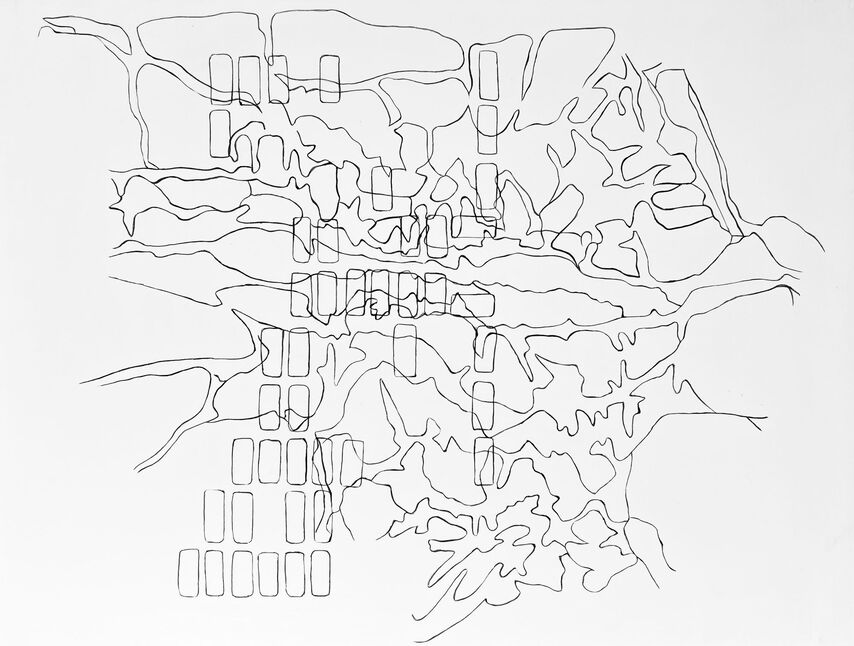An international conference dedicated to rethinking the concept of “modernism”, and to exploring cultural practices as a means of international exchange.
The Space In-Between. Fragments of Modernism in the Global Context
- Date:
- 27–
29 Nov 2025
- Age restrictions
- 16+
“The space in-between” is a term coined by one of the key theorists of Latin American culture, Silviano Santiago. It denotes a borderland, an intermediate territory where hybrid identity is formed: a space that allows us to rethink power, language, and culture beyond binary oppositions such as centre/periphery, original/copy, East/West, North/South.

Illustration: Asya Zaslavskaya. Fragments. Architecture. Memory of a Plan. 2025
The Space In-Between. Fragments of Modernism in the Global Context is a conference that invites discussion about the plurality of modernist trajectories and their relevance today—not as stylistic formulas, but as dynamic processes rooted in specific cultural contexts and often in conflicting processes.
Modernism as a movement in culture and art from the late nineteenth to the early twentieth century (with boundaries that may be stretched in both directions) is commonly associated with a rejection of tradition and a drive to transcend it in the name of progress, with the pursuit of artistic autonomy and the constant renewal of artistic language. Yet the avant-garde of the fin de siècle soon became entangled with the political and diplomatic realities of the twentieth century. Modernism functioned both as a currency of international prestige and as a tool of cultural diplomacy, and a language through which states, institutions, and individuals expressed their modernity. International exchange was no longer a neutral transmission of forms and styles: it became inseparable from asymmetries of power, the demands of representation, and the question of whose “modernity” would be recognised as the norm and whose would be relegated to the margins.
Additionally, modernism became a field of a tension and a search for balance asserting cultural distinctiveness and maintaining international connections, a tension that remains palpable to this day. Outside the European and North American tradition, we may say that the influence of modernist strategies never ceased, if only because they were fragmented and hybridised from the very beginning.
The conference programme examines these questions in three interconnected contexts. The first day focuses on forms of cultural exchange such as exhibitions and other artistic practices that originally arose for diplomatic reasons. This emphasis is especially meaningful for
The second day addresses the issue of the so-called pluriversality of the modernist canon, as well as international exchanges, borrowings, and hybridisations as manifestations of specific artistic, architectural, and literary practices.
The third day explores how modernist principles are reinterpreted through recourse to folk traditions, local materials, and techniques, becoming instruments of cultural self-identification and giving rise to new questions.
The conference will bring together a wide range of methodological approaches: archival reconstructions and analysis of exhibition practices, studies of regional cases, ethnographic and anthropological methods, research on collections, and curatorial reports. Special attention will be paid to the theme of translation—not only linguistic, but also material and institutional: the transmission of artistic forms from one context to another.
Our goal is not the radical revision of the canon, but the creation of a polyphonic space of questions and observations, a setting in which local histories can be correlated with international processes, and established interpretations can be challenged. For Russian participants, this is a chance to expand their understanding of modernism as a diverse and deeply contradictory phenomenon. For
Curators
Lera Kononchuk, Darya Pyrkina, Anna Ushakova, With the participation of Mark Akopyan
Producers
Varvara Arkhipova, Olga Koroleva
Media specialist
Katya Kiseleva